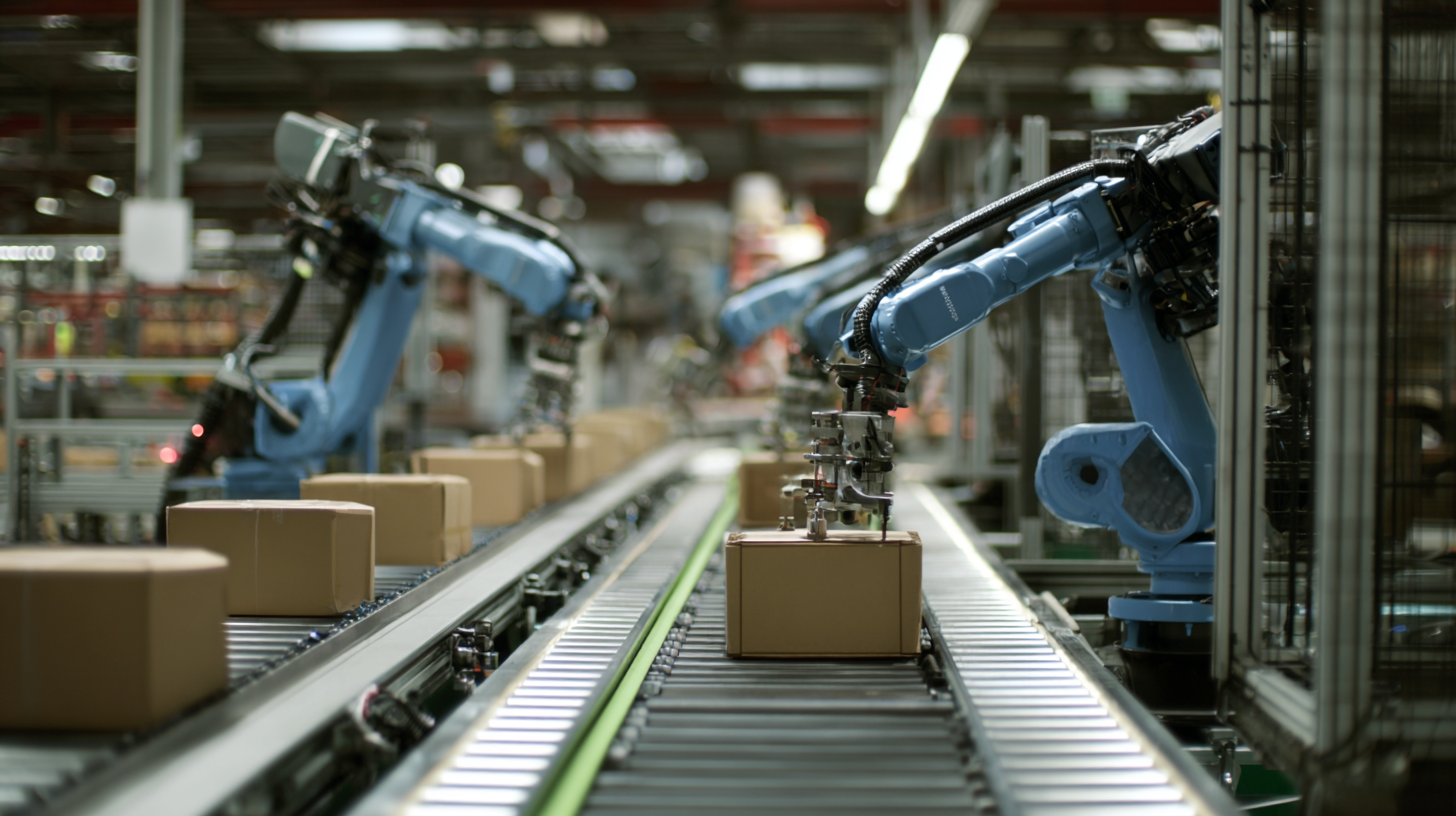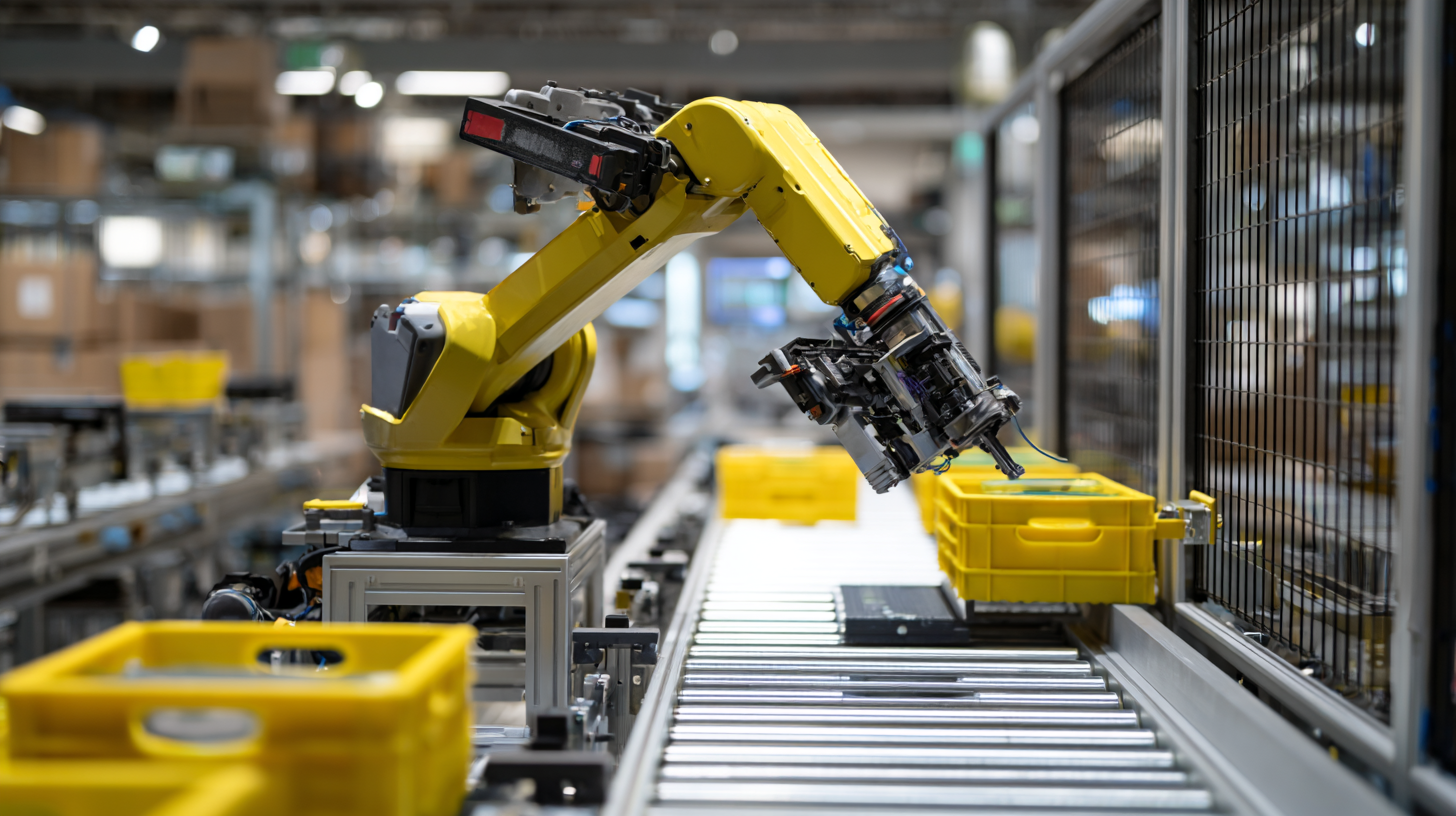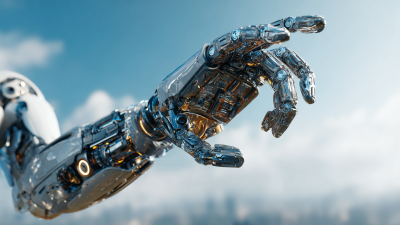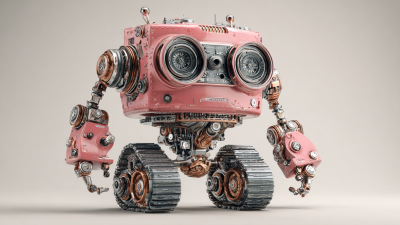Taking Custom Design to New Levels
PROUD TO BE PART OF THE BRIN FAMILY OF COMPANIES

OTHER BRIN LOCATIONS
Brin Glass Company | Minneapolis, MN
St. Germain’s Glass | Duluth, MN
Heartland Glass | Waite Park, MN
In today's fast-paced manufacturing environment, the integration of technologies is essential for maintaining competitive advantage. Rapid robotics has emerged as a transformative force, enabling companies to enhance productivity and efficiency while adapting to the ever-evolving market demands. According to a report by McKinsey, automation and robotics could raise global productivity growth by 0.8 to 1.4% annually, and the demand for rapid robotics solutions is anticipated to surge as companies seek to minimize labor costs and overcome supply chain bottlenecks. Furthermore, a study from ABI Research indicates that the global market for collaborative robots is expected to reach $12 billion by 2025, illustrating the increasing reliance on rapid robotics within manufacturing processes. As manufacturers leverage these innovations, they not only streamline operations but also foster a culture of agility, positioning themselves for success in an increasingly automated future.

The Rise of Rapid Robotics in Modern Manufacturing
In recent years, rapid robotics technology has emerged as a game-changer in the manufacturing sector. According to a report by the International Federation of Robotics, the global sales of industrial robots reached 380,000 units in 2021, marking an increase of 27% from the previous year. This surge is primarily driven by the demand for automation to enhance efficiency, reduce operational costs, and meet the ever-growing consumer expectations for quality and speed. Companies are increasingly adopting collaborative robots (cobots), which are designed to work alongside human workers, thereby facilitating a more versatile and adaptive manufacturing environment.
The integration of rapid robotics not only streamlines production processes but also addresses the skills gap in the workforce. A study by McKinsey indicates that up to 45% of the activities performed by workers could be automated with current technology, emphasizing the need for businesses to evolve. As manufacturers invest in these robotic solutions, they can expect significant reductions in production time and errors. For instance, a report from the Boston Consulting Group highlights that companies utilizing advanced robotics can achieve up to a 20% increase in productivity. This transformative shift towards rapid robotics is setting a new standard in manufacturing, as industries strive to become more agile in an ever-competitive market.

The integration of key technologies is fundamentally reshaping the manufacturing landscape, driven by advancements in robotics. Recent reports highlight significant trends in cloud robotics, where major players are leveraging this technology to enhance efficiency and connectivity in manufacturing processes. By utilizing cloud infrastructure, companies can manage robotic fleets with greater flexibility, optimize workflows, and integrate real-time data analytics, significantly reducing downtime and operational costs.
Moreover, the rise of intelligent vehicles and humanoid robots signifies a shift towards more sophisticated automation in various sectors. These robots are not only enhancing productivity but also enabling a higher degree of precision in tasks ranging from logistics to smart farming. Manufacturers can benefit from cultivating a robust ecosystem that embraces these evolving technologies to stay competitive in a rapidly changing market.
**Tips:** To maximize the benefits of robotics integration, companies should invest in proper training for staff to operate and maintain robotic systems effectively. Additionally, exploring partnerships with technology providers can open up avenues for innovation and scalability in operational processes. Embracing a culture of continuous learning and adaptation will be key in successfully navigating this transformative landscape.
In the rapidly evolving landscape of manufacturing, the integration of automation technologies is heralding a new era of efficiency and cost reduction. Automation is not just about replacing human labor; it serves as a catalyst for enhancing productivity and optimizing operational workflows. Companies are increasingly turning to automated systems, such as robotics and AI, to streamline their manufacturing processes, resulting in higher production rates and substantial cost savings. These advancements enable manufacturers to manage resources more effectively while minimizing waste, which ultimately contributes to a more sustainable business model.
Moreover, the benefits of automation extend beyond mere cost reduction. By implementing these technologies, manufacturers can improve decision-making and innovation, staying competitive in a demanding market. Automation facilitates real-time monitoring and data analysis, enabling proactive adjustments to production lines and the swift identification of potential inefficiencies. As industries continue to embrace these transformative technologies, the overall landscape of manufacturing will evolve, showcasing a future where efficiency and cost-effectiveness are seamlessly intertwined, driving growth and success.
The integration of rapid robotics into manufacturing is fundamentally reshaping how factories operate, marking a new era of efficiency and innovation. Recent advancements, particularly in reinforcement learning technologies, have enabled robots like AgiBot to learn and adapt in real-world settings, optimizing workflows and reducing downtime. According to a 2023 industry report, companies that deployed advanced robotic systems reported a productivity increase of up to 30%, demonstrating the tangible benefits of incorporating autonomous systems into production lines.
Additionally, the emergence of humanoid robots is gaining momentum, with forecasts suggesting that by 2025, the robotics sector could reach a market size of over $70 billion. These humanoid systems are not just a technological novelty but are being designed to enhance operations in logistics, healthcare, and even customer service within factories. Manufacturers are increasingly recognizing that investing in robotics is essential for maintaining competitiveness in a rapidly evolving industrial landscape. The first successful deployments of these technologies are paving the way for a more agile and responsive manufacturing environment, capable of meeting the demands of a dynamic market.

The future prospects for robotic solutions in manufacturing are increasingly promising as industries adopt advanced technologies like AI and automation. The integration of robotics not only enhances productivity but also optimizes operational efficiency across various sectors. As manufacturing landscapes evolve, the trend of utilizing AI-powered machines is gaining momentum, transforming traditional methods and introducing innovative practices. With the global robotics market projected to reach substantial revenue, businesses are looking to harness this technology to remain competitive.
However, alongside these advancements, challenges persist that must be addressed to ensure successful implementation. The need for upskilling the workforce is critical as employees must adapt to working alongside these automated systems. Additionally, ethical considerations regarding AI implementation must be taken into account to avoid potential drawbacks. As manufacturers strive to scale beyond pilot projects into widespread adoption, they will need to navigate these obstacles, ensuring a balanced approach that combines efficiency with social responsibility in the robotic revolution.






Taking Custom Design to New Levels

Brin Glass Company | Minneapolis, MN
St. Germain’s Glass | Duluth, MN
Heartland Glass | Waite Park, MN

Fabricator
Inside Sales and Client Support Manager
Glass Handler – 1st Shift